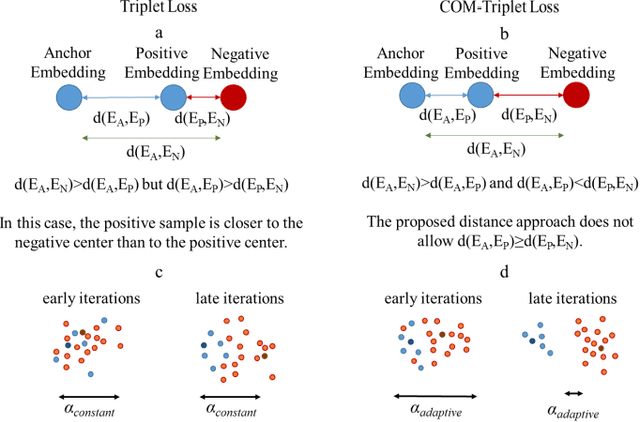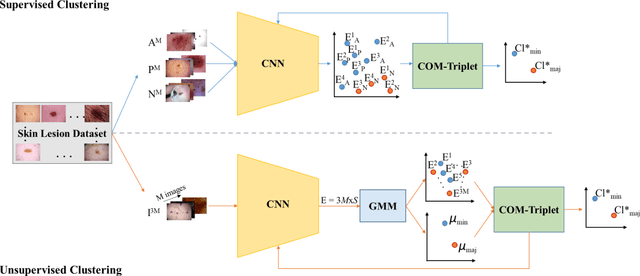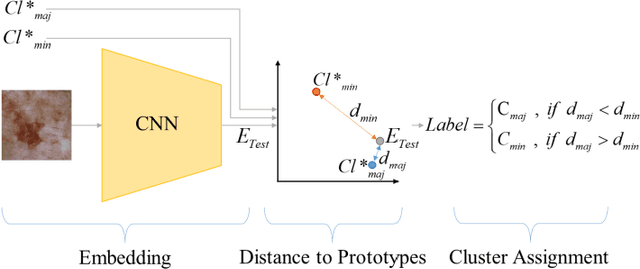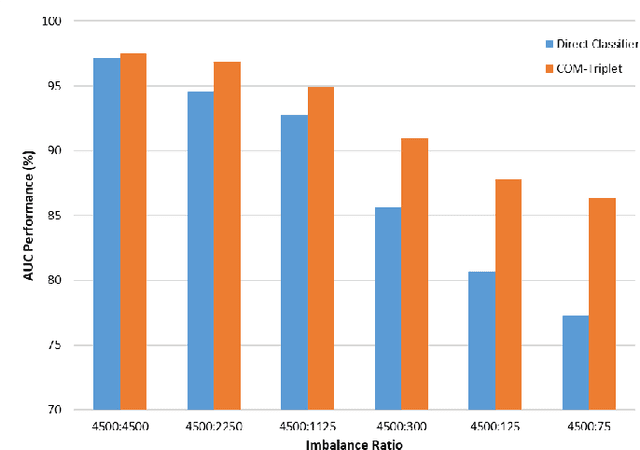Deep Clustering via Center-Oriented Margin Free-Triplet Loss for Skin Lesion Detection in Highly Imbalanced Datasets
Paper and Code
Apr 03, 2022



Melanoma is a fatal skin cancer that is curable and has dramatically increasing survival rate when diagnosed at early stages. Learning-based methods hold significant promise for the detection of melanoma from dermoscopic images. However, since melanoma is a rare disease, existing databases of skin lesions predominantly contain highly imbalanced numbers of benign versus malignant samples. In turn, this imbalance introduces substantial bias in classification models due to the statistical dominance of the majority class. To address this issue, we introduce a deep clustering approach based on the latent-space embedding of dermoscopic images. Clustering is achieved using a novel center-oriented margin-free triplet loss (COM-Triplet) enforced on image embeddings from a convolutional neural network backbone. The proposed method aims to form maximally-separated cluster centers as opposed to minimizing classification error, so it is less sensitive to class imbalance. To avoid the need for labeled data, we further propose to implement COM-Triplet based on pseudo-labels generated by a Gaussian mixture model. Comprehensive experiments show that deep clustering with COM-Triplet loss outperforms clustering with triplet loss, and competing classifiers in both supervised and unsupervised settings.
 Add to Chrome
Add to Chrome Add to Firefox
Add to Firefox Add to Edge
Add to Edge